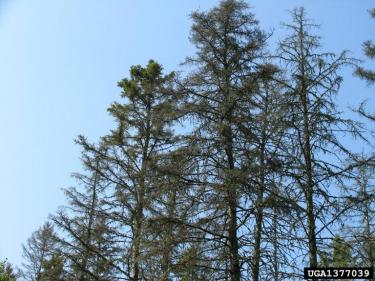When Pine Decline Attacks
A "decline" is a kind of tree affliction that isn't as straightforward as a disease or pest. Pine decline comes from an interplay of several factors.
What Does It Do to my Trees?
It starts with stress. Trees might be stressed by their environment. A dry, south-facing site or a very steep slope, for example, can be hard on trees. Or they might be stressed by some event like a drought or a hurricane that whips the trees around and breaks roots underground.
Once the trees are stressed, they attract beetles. The beetles involved in pine decline burrow underground to feed on the roots.
The beetles carry spores of a fungus that attacks the tree's roots. As the fungus grows, the tree sends resin to the roots to fight it. Eventually the roots get blocked.
Once the roots are 40 percent blocked, the tree starts to show symptoms aboveground. By then it's too late. Trees usually die 2 to 10 years after symptoms appear.
Pine decline appears mostly in trees that are more than 30 years old, although it can affect trees as young as 12. Symptoms include:
- Sparse tree crowns.
- Many cones. Producing lots of cones is a stress response for conifers.
- Short needles. Needles are short and yellow-green.
- Slowed growth. The tree's trunk will stop expanding.
A local extension agent or forester can help you figure out if pine decline or something else is affecting your woods.
Learn what to do if you think you have pine decline on your land.
How can I get more tips?
It’s simple! Enter your email below.

